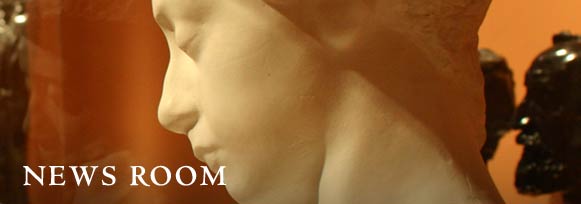Works from Two of Thailand’s Most Important Living Artists
Visions of Dharma: Thai Contemporary Art
November 15 – March 4, 2007
Stanford, California — The Cantor Arts Center at Stanford University presents the work of two of Thailand’s most important living artists from November 15, 2006 through March 4, 2007, in an exhibition entitled Visions of Dharma: Thai Contemporary Art. The artists Kamol Tassananchalee and Thawan Duchanee have both been awarded the title of “National Artist,” an honor that the Thai government gives to just one artist, poet, or author a year.
While deeply rooted in Buddhism and traditional Thai culture, these two artists’ works are very contemporary and explore a wide range of subjects and styles, ranging from the struggle to control innermost passions and violent desires, to ecological issues and the devastation of the recent tsunami. “Visions of Dharma" highlights the divergent approaches to their art and raises questions about the relationship between subject matter, style, and patronage. Duchanee lives in Thailand and overtly depicts Buddhist and psychological themes.
His work emerges from the surrealistic tradition of early 20th-century Thai art and creates psychologically compelling, dream-like images of people and mythic beasts. He was the first Thai artist to build an international reputation, and his work has been very popular in Europe. Only recently have Thais started to collect his work. Duchanee was awarded the title of National Artist in 2001.
Tassananchalee was awarded the title of National Artist in 1997 by the Thai government. He works in a variety of genres, from naturalistic landscapes to abstractions, crediting his dreams as the source of his imagery, and his work subtly refers to Buddhist and political themes. He graduated from the Otis Art Institute in Los Angeles, where he still resides. He has become almost a cult figure in Thailand, where his work is very popular, yet few Americans collect his work.
The exhibition, organized by the Cantor Arts Center, is made possible by the Halperin Exhibitions Fund. In conjunction with the exhibition, the Cantor Arts Center and the Stanford Center for Buddhist Studies/Asian Religions and Cultures Initiative will co-sponsor a lecture in January on Buddhist art. Lecture details.
VISITOR INFORMATION: The Cantor Arts Center is open Wednesday – Sunday, 11 am – 5 pm, Thursday until 8 pm, including Easter Sunday. Admission is free. The Center is located on the Stanford campus, off Palm Drive at Museum Way. Parking is free on weekends and after 4 p.m. on weekdays. For information, call 650-723-4177, or visit website museum.stanford.edu.



